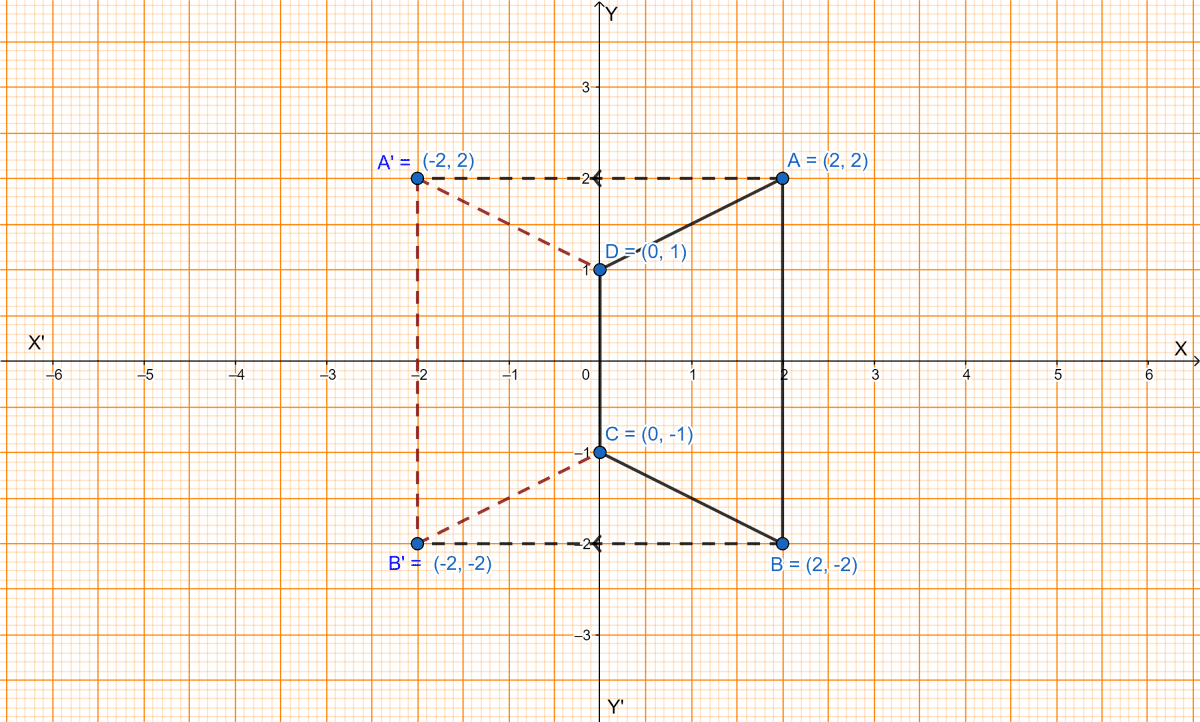Mathematics
Use graph paper for this question (take 2cm = 1 unit along both x and y axis). ABCD is a quadrilateral whose vertices are A(2, 2), B(2, -2), C(0, -1) and D(0, 1).
(i) Reflect quadrilateral ABCD on the y-axis and name it as A'B'CD.
(ii) Write down the coordinates of A' and B'.
(iii) Name two points which are invariant under the above reflection.
(iv) Name the polygon A'B'CD.
Reflection
38 Likes
Answer
(i) Reflected quadrilateral A'B'CD is shown in the graph below:

(ii) From graph we get,
The coordinates of A' and B' are (-2, 2) and (-2, -2) respectively.
(iii) From graph we get,
The two points which are invariant under the above reflection are C and D.
(iv) From graph we get,
The polygon(A'B'CD) formed is an isosceles trapezium.
Answered By
22 Likes
Related Questions
Given two points P and Q, and that (1) the image of P on reflection in y-axis is the point Q and (2) the mid point of PQ is invariant on reflection in x-axis. Locate (i) the x-axis (ii) the y-axis and (iii) the origin.
The point (-3, 0) on reflection in a line is mapped as (3, 0) and the point (2, -3) on reflection in the same line is mapped as (-2, -3).
(i) Name the mirror line.
(ii) Write the coordinates of the image of (-3, -4) in the mirror line.
Use a graph sheet for this question. Take 1cm = 1 unit along both x and y-axes.
(i) Plot the points : A(0, 5), B(3, 0), C(1, 0) and D(1, -5).
(ii) Reflect the points B, C and D on the y-axis and name them as B', C' and D' respectively.
(iii) Write down the coordinates of B', C' and D'.
(iv) Join the points A, B, C, D, D', C', B', A in order and give a name to the closed figure ABCDD'C'B'.
Use graph paper for this question.
(i) The point P(2, -4) is reflected about the line x = 0 to get the image Q. Find the coordinates of Q.
(ii) Point Q is reflected about the line y = 0 to get the image R. Find the coordinates of R.
(iii) Name the figure PQR.
(iv) Find the area of the figure PQR.